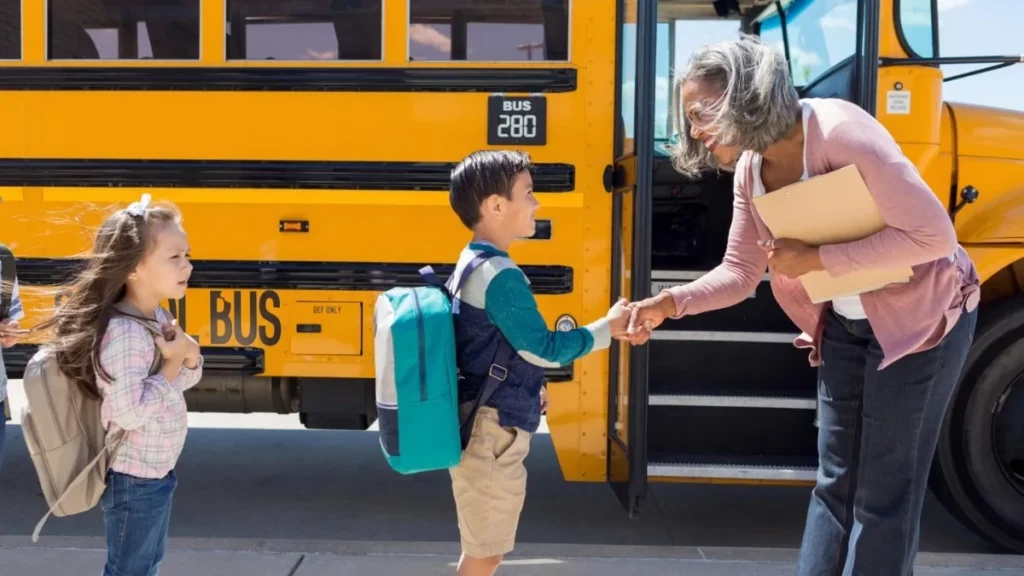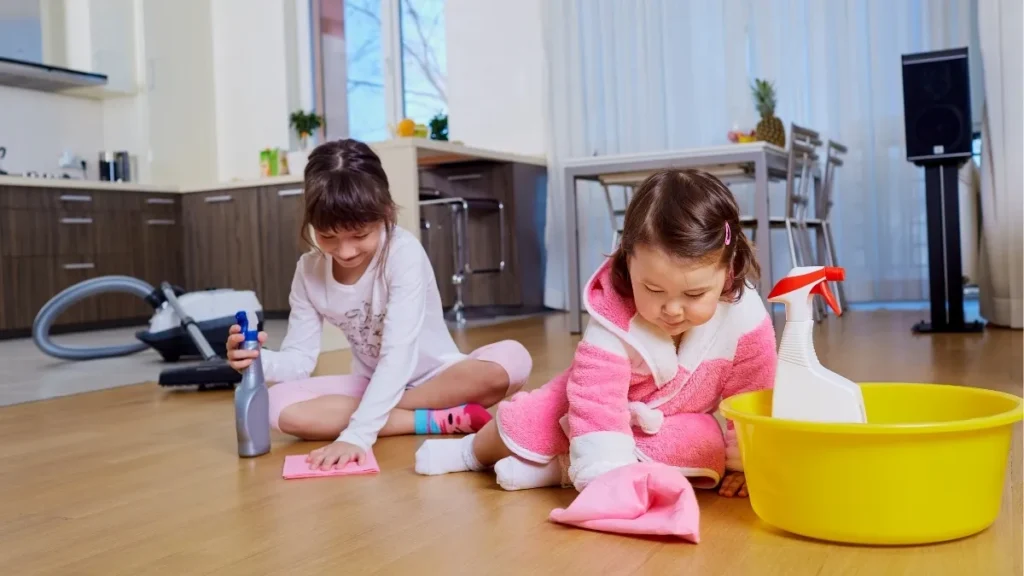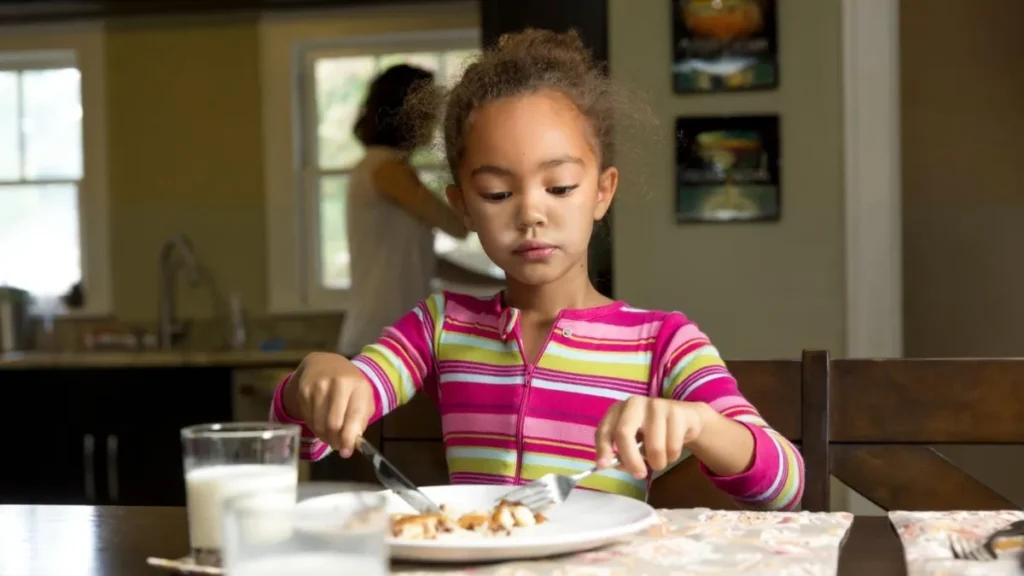Basic Good Manners
Why Good Manners Matter for Your Child
Good manners are more than just using polite phrases. They’re about showing respect, consideration, and kindness towards others.
Here’s why teaching your child good manners is crucial:
- Builds Strong Social Skills:

Good manners help children navigate social situations with confidence. They learn how to greet others appropriately, take turns in conversation, and interact respectfully with people of all ages and backgrounds.
Strong social skills allow children to build healthy friendships and feel comfortable in different social settings.
- Boosts Self-Confidence:
When children understand and practice good manners, they feel capable and in control. Using polite phrases like “please” and “thank you” demonstrates respect for themselves and others.
This sense of accomplishment builds their self-confidence and allows them to approach new situations with a positive attitude.
- Sets the Stage for Future Success:
Good manners are valued in all aspects of life. In school, children with good manners are seen as respectful and cooperative learners.
In the workplace, adults with strong social skills are more likely to be seen as team players and effective communicators.
Teaching good manners early on prepares your child for success in all areas of their life.
Benefits of Learning Good Manners

The benefits of good manners extend far beyond simply being polite. Here’s how your child can reap the rewards of good manners:
- Creates Positive Relationships:
Using polite language and interacting respectfully fosters positive relationships with peers, teachers, family members, and everyone they encounter.
Good manners make children more likeable and approachable, which helps them build strong and lasting relationships.
- Develops Empathy and Respect:
By learning to consider the feelings and needs of others, children develop empathy and respect.
Good manners encourage them to think before they act and to treat others the way they want to be treated.
- Improves Communication Skills:
Good manners encourage active listening, clear communication, and taking turns in conversation. These skills are essential for effective communication throughout life.
How to Teach Good Manners to Your Child
Now that you understand the importance and benefits of good manners for your child, let’s explore some effective strategies to help them learn and practice these valuable skills:
Be a Role Model:
Children are natural mimics. The best way to teach good manners is to model them yourself.
Use polite language in everyday interactions, greet others with a smile, and be respectful in your own behavior. Your child will naturally pick up on these cues.
Start Early and Be Consistent:
The earlier you begin to teach good manners, the easier it will be for your child to develop these habits. However, consistency is key.
Reinforce good manners throughout the day, in various situations. A gentle reminder here and there goes a long way.
Make it Fun and Engaging:
Learning shouldn’t feel like a chore. Turn practicing good manners into a game or activity.
Role-play different scenarios, read stories that emphasize politeness, or create a “manners chart” to track progress and celebrate achievements.
Recommended: 300+ Fun & Easy Toddler Activities for Hours of Fun
Positive Reinforcement:
Focus on praising good behavior rather than punishing bad manners. When your child uses polite language, offers to help, or shows consideration for others, acknowledge and appreciate their efforts.
Positive reinforcement encourages them to continue practicing good manners.
Focus on the Why:
Help your child understand the purpose behind good manners. Explain how using polite words makes others feel good and how respectful behavior helps build friendships.
Connecting the dots will make them more invested in practicing good manners.
This approach creates a positive learning environment where your child feels supported and encouraged to develop their social skills.
31 Basic Good Manners to Teach Your Kids
Here’s the list of 31 basic good manners to equip your child with, along with tips on how to instill them:
Greetings and Introductions
1. Say Hello and Goodbye

Teach your child to greet others with a smile and a friendly “hello” or “good morning.” Practice saying goodbye politely as well.
Tip: Role-play greetings at home to build confidence. Encourage them to make eye contact and use a clear voice.
2. Introduce Themselves
Help your child learn to introduce themselves clearly, stating their name. For older children, encourage them to include a friendly phrase like “It’s nice to meet you.”
Tip: Practice introductions with friends, family, or even neighbors to build comfort.
Manners at Home
3. Please and Thank You
These magic words are essential for expressing gratitude and respect.
Start early and consistently remind your child to use “please” when requesting something and “thank you” when receiving something or after a kind gesture.
Tip: Make a game of it! See who can remember to say “please” and “thank you” the most throughout the day.
4. Asking Permission
Inculcate the habit of asking permission before taking something that doesn’t belong to them or doing something they’re unsure about.
Tip: Explain that asking permission shows respect for others’ belongings and boundaries.
5. Table Manners
Develop good table manners by teaching your child to sit up straight, use utensils properly, chew with their mouth closed, and not talk with their mouth full.
Tip: Make mealtimes a fun learning experience. Use colorful placemats and kid-friendly utensils to keep them engaged.
6. Offering Help
Encourage your child to offer help with chores or errands at home. This fosters responsibility and shows consideration for others.
Tip: Assign age-appropriate tasks and praise them for their willingness to help.
7. Cleaning Up

Teach your child to pick up after themselves and put their toys away. This instills a sense of responsibility and respect for their belongings and space.
Tip: Make cleaning up a family activity. Play upbeat music or set a timer to turn it into a fun game.
Manners in Public
8. Personal Space
Help your child understand the concept of personal space and to maintain a respectful distance from others in public settings.
Tip: Use age-appropriate explanations like “an arm’s length” or “not close enough to touch” to define personal space.
9. Sharing
Teach your child the importance of sharing toys and taking turns with siblings or friends.
Tip: Use picture books or role-playing to demonstrate sharing and its positive outcomes.
10. Saying Excuse Me
Inculcate the habit of saying “excuse me” when bumping into someone, interrupting a conversation, or needing to pass through a crowded space.
Tip: Explain that “excuse me” is a polite way to get someone’s attention or navigate a situation without being rude.
11. Using Indoor Voices
Teach your child to adjust their voice volume to the situation. In libraries, restaurants, or other quiet places, encourage them to use a calmer, quieter voice.
Tip: Play a “whisper game” at home to practice using a quieter voice in a fun way.
12. Electronic Courtesy:
As your child interacts with technology, introduce them to good digital manners. This includes avoiding loud noises on devices in public places, not interrupting conversations with screen time, and being mindful of online content.
Tip: Discuss the importance of respecting others’ space and time, even in the digital world.
Manners for Guests
13. Greeting Guests:
Teach your child to greet guests politely and offer them a seat.
Tip: Encourage them to participate in conversations with guests, asking simple questions and listening attentively.
14. Offering Help

When you have guests, encourage your child to offer to help set the table, bring napkins, or clear plates. This shows hospitality and consideration.
Tip: Explain that helping makes guests feel welcome and shows good manners.
Manners on the Phone
15. Answering the Phone:
Teach your child how to answer the phone politely with a greeting like “hello” or “this is [child’s name].”
Tip: Role-play phone conversations to practice answering and taking simple messages.
16. Asking Permission:
Before handing the phone to someone else, remind your child to ask permission first.
Tip: “Not sure if they’re free, mind if I ask?” or “Hold on a sec, gotta check!” Encourage your child to be considerate of the other person’s time by asking permission before transferring the call.
17. Speaking Clearly
Encourage your child to speak clearly and politely on the phone, avoiding yelling or background noise.
Tip: Remind them to identify themselves at the beginning of the call and say “goodbye” before hanging up.
Manners in Public Places
18. Respecting Others’ Property
Teach your child to treat other people’s property with respect. This includes not writing on walls, littering, or damaging public spaces.
Tip: Explain that taking care of public spaces shows respect for others and keeps our communities clean.
19. Following Rules
In places with rules, like libraries, museums, or parks, remind your child to follow the guidelines and behave appropriately.
Tip: Talk about the importance of rules in keeping everyone safe and having a positive experience in these places.
20. Waiting Patiently
Help your child develop patience by teaching them to wait their turn in lines or when someone else is using something they want.
Tip: Bring quiet activities like books or small toys to keep them occupied while waiting.
Manners on Public Transportation
21. Giving Up Seats
Teach your child to offer their seat to someone who needs it more, like an elderly person, someone with a disability, or a pregnant woman.
Tip: Explain that this is a kind gesture that shows respect and consideration for others.
22. Keeping Noise Levels Down
Remind your child to be mindful of noise levels on public transportation. Avoid loud talking, shouting, or playing music without headphones.
Tip: Encourage them to read a book or listen to music quietly with headphones to stay entertained.
Manners for Conversations
23. Active Listening
Teach your child the importance of active listening. This involves making eye contact, nodding their head, and avoiding interrupting when someone else is speaking.
Tip: Play listening games where they have to repeat back what they heard to practice this skill.
24. Taking Turns
In conversations, encourage your child to take turns speaking and to listen attentively to what others have to say.
Tip: Use a talking stick or timer to help them understand the concept of taking turns fairly.
25. Using Kind Words
Teach your child to use kind and respectful language in their conversations. Avoid name-calling, teasing, or using hurtful words.
Tip: Read stories about the power of words and how kindness can make a difference.
Manners When Eating Out
26. Using Utensils Properly
Help your child learn to use utensils properly at restaurants. This includes holding a fork and knife correctly and using a napkin as needed.
Tip: Practice utensil use at home during pretend restaurant play to build confidence.
27. Chewing with Mouth Closed

Remind your child to chew with their mouth closed and not to talk with their mouth full.
Tip: Explain that this is good table etiquette and shows respect for others dining with them.
28. Asking Permission to Leave the Table
Inculcate the habit of asking permission before leaving the table at a restaurant.
Tip: Explain that this shows respect for the adults at the table and lets them know when they can be excused.
29. Saying Thank You
After a meal at a restaurant, teach your child to thank the server for their service.
Tip: This is a small gesture of appreciation for their hard work.
Manners When Receiving Gifts:
30. Saying Thank You
Most importantly, teach your child to express gratitude by saying “thank you” for any gift they receive, regardless of their preference.
Tip: Encourage them to be specific about what they like about the gift, if appropriate.
31. Treating All Gifts with Respect
Inculcate the value of appreciating all gifts, even if it’s not what they expected. Encourage them to play with the gift or display it appropriately.
Tip: Explain that receiving a gift is a thoughtful gesture, and showing appreciation is a sign of good manners.

Conclusion
Your little one won’t learn all the manners overnight. You need to have patience.
And by consistently teaching and reinforcing these good manners, you’ll help your child navigate social situations with confidence and build strong relationships throughout their life.
Key takeaways:
- Good manners are essential building blocks for strong social skills, self-confidence, and future success.
- Teaching your children good manners fosters kindness, respect, and positive interactions with others.
- This article provides a comprehensive list of 31 basic good manners to teach your kids, along with tips on how to effectively instill these valuable life skills.